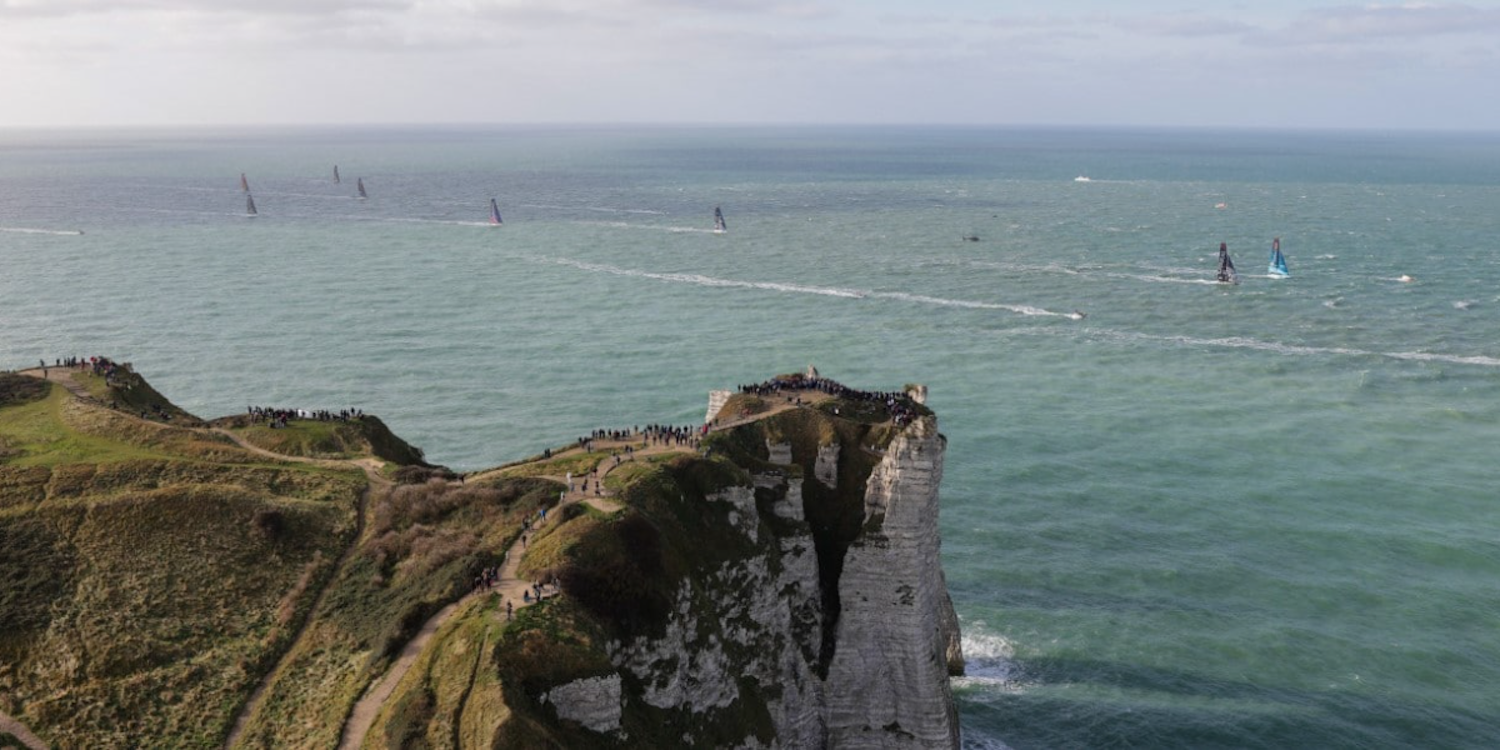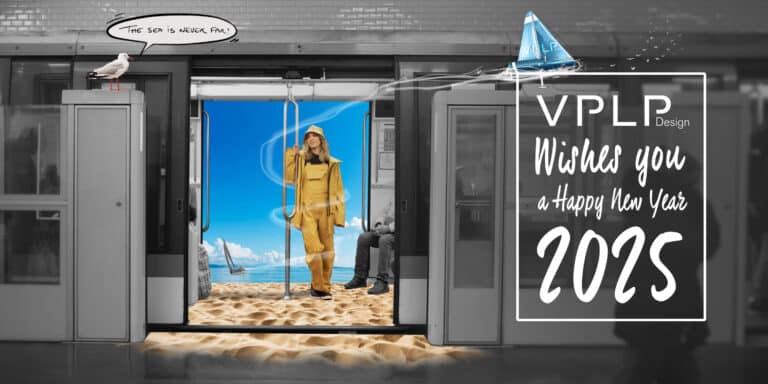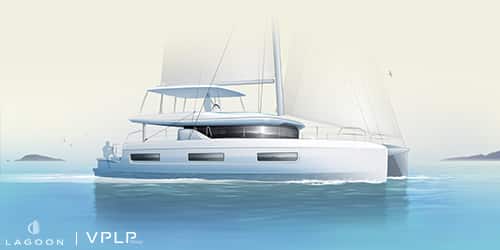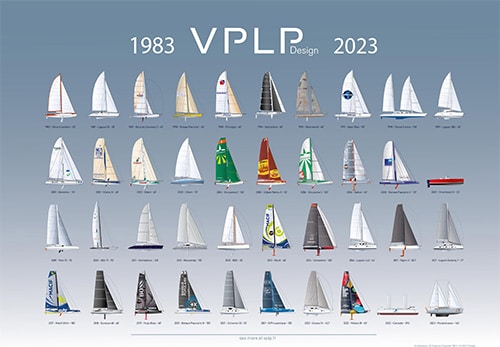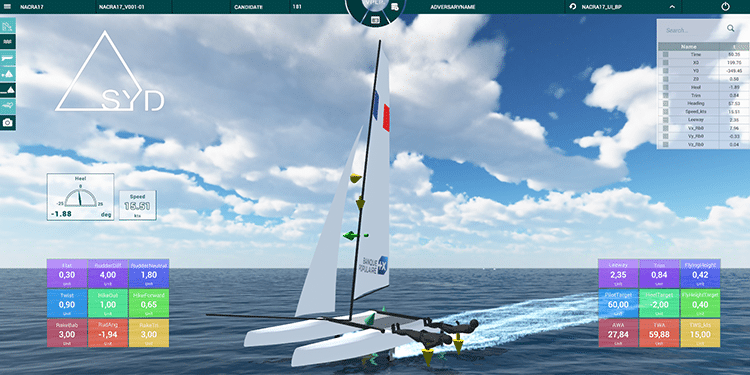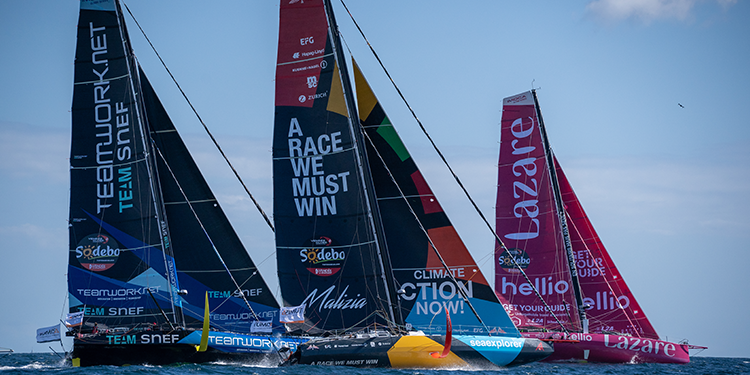In every class of the Transat Jacques Vabre 2021 the Ultims, Ocean Fiftys, IMOCAs and Class40s designed by VPLP demonstrated their reliability and logged impressive performances. Even the latest models which went into the water shortly before the starting gun did the design firm proud. Architects Quentin Lucet, Xavier Guilbaud and Antoine Lauriot-Prévost give us their assessment of the race and tell us what to expect for 2022, including season highlight the Route du Rhum.
Let’s start with the Ultim class. What’s your take on the performances of SVR-Lazartigue (2nd) and Banque Populaire XI (3rd)?
Xavier Guilbaud: The results are very positive. They achieved podium places and fetched Martinique with their racing potential 100% intact, which is remarkable considering they’ve only been in the water a few months. First and foremost the skippers wanted to pile on the experience by getting some nautical miles under their belts. So they didn’t take any undue risks.
Quentin Lucet: You have to admire the remarkable job the technical teams have done in getting to grips with these extremely complex trimarans. They managed to iron out the teething troubles and make the boats reliable in just a few short months. These Ultims were real contenders throughout, and in certain conditions we saw some very interesting runs which substantiated their capacity for higher speeds.
That’s encouraging for the 2022 Route du Rhum…
Xavier Guilbaud: Yes, François Gabart and Armel Le Cléac’h can expect to cross the starting line of the Route du Rhum with boats running like clockwork. We’ve seen that these Ultims can “easily” maintain high average speeds. It’s encouraging for the Route du Rhum and in the long term for the solo round-the-world race [ed. note: scheduled for late 2023]. We know from experience that it takes a skipper several seasons to master these boats fully.
What do you think about Actual Ultim 3’s fourth place?
Xavier Guilbaud: Actual Ultim remains a very good machine, but she suffered from the weather. We know that she’s less competitive in winds under 12–14 knots. In the same conditions the new trimarans will start flying but not Actual Ultim. We believe that had there been more wind, the results would have been much tighter. Her structure is in great shape and has a strong potential for development, such as adding new appendages. She could be a real contender in the Route du Rhum.
Let’s talk about the Ocean Fifty class, now. What’s your assessment?
Antoine Lauriot-Prévost: We designed four of the seven Ocean Fiftys in the race: Koesio (2nd), Leyton (3rd), Solidaires en Peloton (4th) and Groupe GCA–1001 Sourires (6th). None of these boats won but they all crossed the finishing line and their performances were encouraging, in particular the most recent of them, Koesio, a light boat which behaved remarkably well reaching VMG. In terms of user friendliness, the totally dry living and operating area proved its worth. When a sailor can trim the sails without having to face the wind and the waves, he isn’t going to grumble. It enhances performance over time. Koesio was clearly in with a chance of taking the top spot. Leyton and Solidaires en Peloton also kept ahead of the pack. As for Groupe GCA–1001 Sourires, she logged some very impressive averages over certain runs and can expect many fine seasons to come. The results are positive and we hope to convert this try in next year’s edition of the Route du Rhum. I’m thinking in particular about Koesio, I expect her to make huge progress.
In the IMOCA class Charal made it onto the podium, like she did two years ago. Could she have done better?
Quentin Lucet: Charal managed to keep in the running with more or less the same set-up she had for the Vendée Globe, Jérémie Beyou’s team having decided to concentrate their efforts on the development of his next boat instead. There are plenty of avenues for enhancement on Charal, in particular her ballast tanks and her foils, adding structural reinforcements wherever necessary. It was a bit frustrating not to see the former Hugo Boss [ed. note: now in the hands of Alan Roura] in this latest edition of the Transat Jacques Vabre. The conditions would have suited her. But we can look forward to seeing Alan Roura show us what she can do in the 2022 Route du Rhum.
For the first time a VPLP-designed Class40 crossed the starting line in a race. What’s your take on the performance of Emile Henry-Happyvore (13th)?
Quentin Lucet: This Class40 went into the water a few weeks before the start of the race. She was clearly born under a good sign, because she didn’t suffer any structural issues. We were pleasantly surprised to see Erwan Le Draoulec and skipper Nicolas d’Estais doing so well despite still being in the discovery phase. Speedwise, they held their own against more mature boats. We are happy with the design of the hull. We took the time to analyse the existing fleet, identifying the strong points and disadvantages of the other concepts. The work paid off. The boat amply satisfies our expectations and we can hope for considerable gains in performance by the start of the next Route du Rhum.
